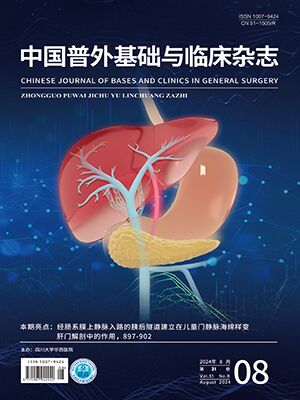Objective To investigate the value of magnetic resonance (MR) imaging for diagnosing typeⅠ congenital choledochocele and its complications.
Methods The MR imaging data of 13 cases with proved typeⅠ congenital choledochocele associated with complications were retrospectively reviewed and compared with operative findings. MR imaging sequences included axial T2W and T1W plain scan, true-FISP coronal images, 2D-MRCP, and Gd-enhanced T1W images.
Results All patients had cystic dilatation of the common bile ducts to various degrees. In 6 patients complicated with stone and infection, the bile duct showed uniform wall thickening with marked enhancement, and calculus were depicted within the duct lumen with dilatation of the proximal biliary duct. In 7 cases complicated with carcinoma of biliary duct, a polypoid soft tissue mass or nodule was seen inside the ductal lumen in 3 cases, or the duct wall was irregularly thickened in 4 patients. Six cases received curative operation, but one patient with extensive local infiltration, vascular encasement and lymphadenopathy had only palliative treatment. MR imaging observations were verified by surgery findings in all 13 patients.
Conclusion MR imaging is very valuable not only in diagnosing typeⅠ congenital choledochocele, but also in revealing its complications.
Citation: XIA Jindong,SONG Bin,ZHOU Xiangping. MRI Diagnosis and Preoperative Assessment of Type Ⅰ Congenital Choledochocele and Its Complications. CHINESE JOURNAL OF BASES AND CLINICS IN GENERAL SURGERY, 2007, 14(3): 354-358. doi: Copy




